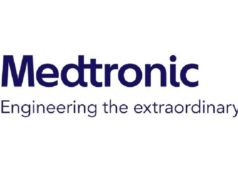New results from a multicentre study of Abbott’s BurstDR stimulation show that lower-energy, intermittent doses of BurstDR stimulation—known as “microdosing”—can provide pain relief that is just as effective as standard doses of BurstDR stimulation in people with chronic intractable pain.
The BurstDR micrOdosing stimuLation in De-novo patients (BOLD) study, presented at the 22nd Annual North American Neuromodulation Society meeting (NANS; 17–20 January, 2019), shows a potential way to prolong the battery life of a patient’s spinal cord stimulation (SCS) device while offering optimal pain relief. The research may also provide a path toward ensuring lower-maintenance recharge-free SCS devices offer similar battery longevity as rechargeable SCS systems, which carry a higher burden for patients.
In a separate study called BURST(able), also presented at NANS 2019, data showed that patients who no longer received effective pain relief from their SCS therapy experienced restored pain control and reduced opioid dependency when they switched to an Abbott device offering the BurstDR waveform. Loss of pain relief is the most common cause for patients seeking an explant of their SCS system, and combatting this loss of efficacy addresses one of the key problems seen in long-term SCS therapy.
Approximately 1.5 billion people around the world are affected by chronic pain. SCS delivers a low-voltage electrical current through the spine to block the sensation of pain and offers an important alternative to opioid therapy. While traditional SCS systems produce therapeutic waveforms that are delivered at a consistent frequency and charge, Abbott’s BurstDR stimulation works differently from other stimulation devices, utilising proprietary technology to produce intermittent pulses—or bursts—designed to mimic the body’s natural nerve impulse patterns. Abbott is the only company approved to offer BurstDR stimulation to patients in the USA and international markets.
The (BOLD) study differentiates BurstDR stimulation from all other forms of stimulation in the ability to have proven effectiveness at low doses. Forty patients enrolled in the study started with a trial period using “microdosed” BurstDR stimulation before moving to an implanted device if they achieved at least a 50% reduction in pain. Physicians then determined the lowest effective dose of BurstDR stimulation that still delivered equivalent or improved pain relief compared to the patient’s trial. Results from the study showed that 100% of patients experienced pain relief with less than six hours of battery use per day; and 43% of patients achieved pain relief with less than 2 hours of battery use per day.
A non-industry sponsored, retrospective, multicentre study, BURST(able) evaluated patients who had experienced a loss of pain relief from their non-Abbott SCS systems and switched to an Abbott device offering BurstDR waveform. Following the surgical replacement of their new system, patients who had experienced minimal pain relief (24–26%) from competitive SCS systems reported a 60–70% reduction in their pain; and a 41–52% reduction in their opiate consumption.












